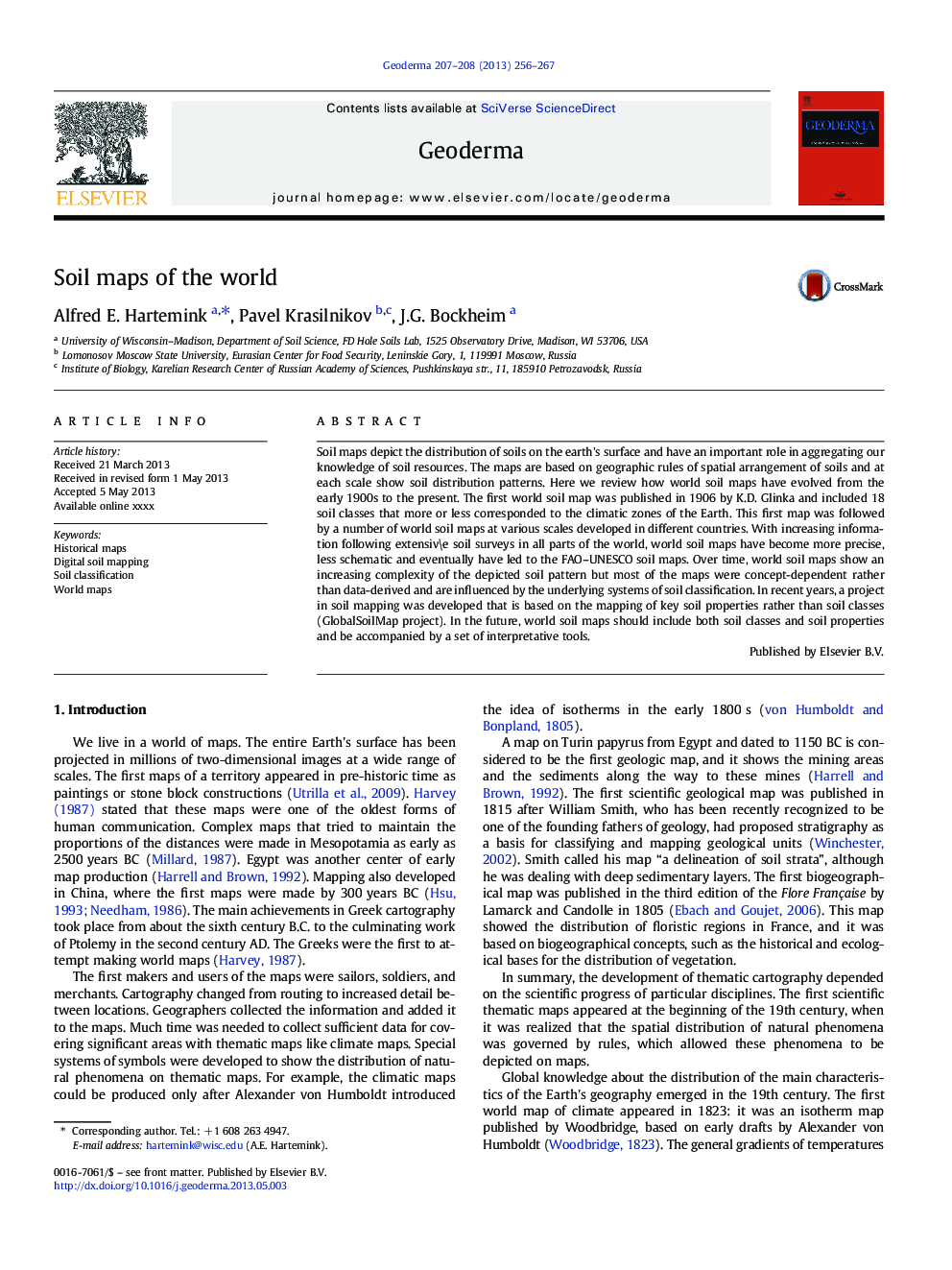| Article ID | Journal | Published Year | Pages | File Type |
|---|---|---|---|---|
| 6409177 | Geoderma | 2013 | 12 Pages |
Abstract
Soil maps depict the distribution of soils on the earth's surface and have an important role in aggregating our knowledge of soil resources. The maps are based on geographic rules of spatial arrangement of soils and at each scale show soil distribution patterns. Here we review how world soil maps have evolved from the early 1900s to the present. The first world soil map was published in 1906 by K.D. Glinka and included 18 soil classes that more or less corresponded to the climatic zones of the Earth. This first map was followed by a number of world soil maps at various scales developed in different countries. With increasing information following extensive soil surveys in all parts of the world, world soil maps have become more precise, less schematic and eventually have led to the FAO-UNESCO soil maps. Over time, world soil maps show an increasing complexity of the depicted soil pattern but most of the maps were concept-dependent rather than data-derived and are influenced by the underlying systems of soil classification. In recent years, a project in soil mapping was developed that is based on the mapping of key soil properties rather than soil classes (GlobalSoilMap project). In the future, world soil maps should include both soil classes and soil properties and be accompanied by a set of interpretative tools.
Related Topics
Physical Sciences and Engineering
Earth and Planetary Sciences
Earth-Surface Processes
Authors
Alfred E. Hartemink, Pavel Krasilnikov, J.G. Bockheim,
